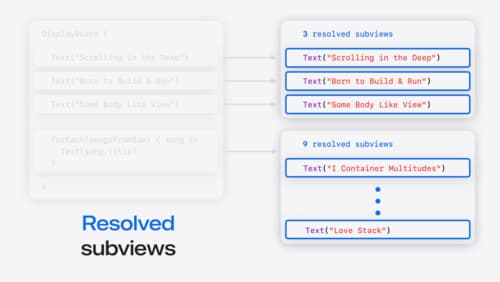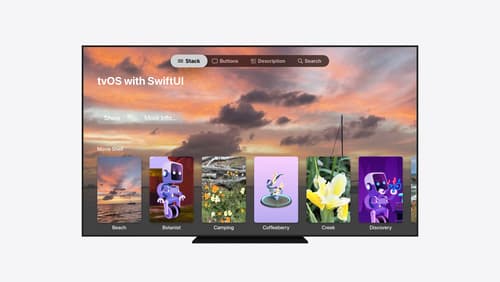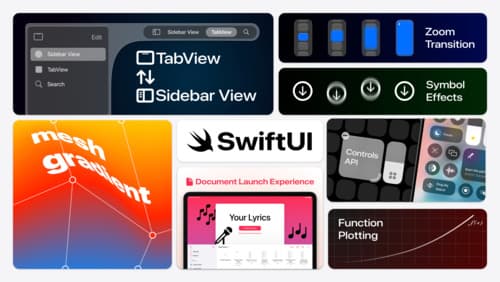swiftui tableview
Asked on 2024-07-29
1 search
To work with table views in SwiftUI, you can use the List view, which is a powerful and flexible way to display data in a table-like format. Here are some key points and examples from the WWDC sessions that might help you:
-
Basic List Usage:
- You can create a list by passing a collection to the
Listinitializer. This will generate views for each element in the collection. - Example from the session:
List(pets) { pet in Text(pet.name) } - This is a simple way to display a list of items, where
petsis a collection of pet objects.
- You can create a list by passing a collection to the
-
Customizing List Rows:
- You can customize each row in the list by using custom views.
- Example from the session:
List(pets) { pet in PetRow(pet: pet) } - Here,
PetRowis a custom view that takes apetobject and displays its details.
-
Advanced List Features:
- SwiftUI allows you to add features like swipe actions to list rows.
- Example from the session:
List(pets) { pet in PetRow(pet: pet) .swipeActions { Button("Award") { // Action to award the pet } } } - This adds a swipe action to each row, allowing users to perform actions like awarding a pet.
-
Searchable Lists:
- You can make lists searchable by using the
searchablemodifier. - Example from the session:
@State private var searchTerm = "" List(filteredPets) { pet in PetRow(pet: pet) } .searchable(text: $searchTerm) - Here,
filteredPetsis a collection that is filtered based on thesearchTerm.
- You can make lists searchable by using the
For more detailed information, you can refer to the following sessions:
- SwiftUI essentials (07:56)
- Migrate your TVML app to SwiftUI (11:07)
These sessions cover the fundamentals of views, including lists and their customization, as well as advanced features like searchability and swipe actions.

Demystify SwiftUI containers
Learn about the capabilities of SwiftUI container views and build a mental model for how subviews are managed by their containers. Leverage new APIs to build your own custom containers, create modifiers to customize container content, and give your containers that extra polish that helps your apps stand out.

Migrate your TVML app to SwiftUI
SwiftUI helps you build great apps on all Apple platforms and is the preferred toolkit for bringing your content into the living room with tvOS 18. Learn how to use SwiftUI to create familiar layouts and controls from TVMLKit, and get tips and best practices.

What’s new in SwiftUI
Learn how you can use SwiftUI to build great apps for any Apple platform. Explore a fresh new look and feel for tabs and documents on iPadOS. Improve your window management with new windowing APIs, and gain more control over immersive spaces and volumes in your visionOS apps. We’ll also take you through other exciting refinements that help you make expressive charts, customize and layout text, and so much more.
